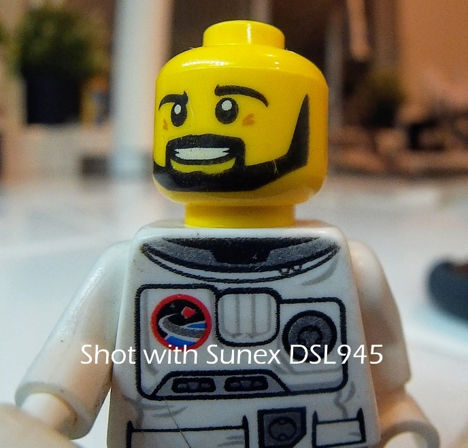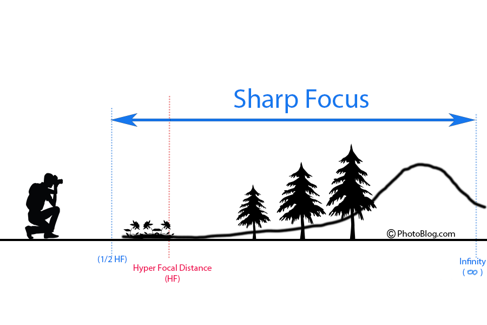
Many applications require that CMOS or CCD imaging lenses be optimized for a finite object, that is, for an object distance closer than “infinity.” The practical definition of infinity varies based on individual use-case requirements and the specific lens being used. It can be defined in different ways, such as spot size, through-focus MTF, etc. As a general rule of thumb, and depending on F/#, infinity is generally 100-200x the focal length (EFL) of the lens for short-EFL board-mount lenses. You can calculate your specific use-case hyperfocal distance using our DOF Wizard here: http://www.optics-online.com/DepthofFocus.asp
To better understand how finite imaging lenses work, it is important to also understand some basic terms, and how a typical infinite conjugate lens works.
Hyperfocal Distance: The point at which when a lens is focused at this distance, depth of field extends from half this distance to infinity.

Infinite Conjugate Lens: A lens optimized to perform best when focused at or beyond the lens hyperfocal distance for imaging of objects at infinity.
Finite Conjugate Lens: A lens optimized for focusing on a discrete object closer than the hyperfocal distance.
Most off-the-shelf, compact CMOS and CCD lenses on the market today are Infinite Conjugate lenses. This is because there is essentially an infinite number of possible finite conjugate distances. Although infinite conjugate lenses will work reasonably well at reasonable finite distances, Multi-Megapixel and other demanding applications often require better image quality than an infinity-corrected lens can deliver at said short object distances. Such applications include Document Imaging, Biometric Scanning and Imaging (facial recognition, fingerprint scanners, and iris scanners), Machine Vision, and diagnostic or clinical Medical Devices and Instrumentation.
A bespoke or reoptimized finite-conjugate lens offers significant advantages in this regime because it can be corrected specifically for aberrations that arise from short object distances, such as field curvature.
Although you may use an infinity-corrected lens at a finite distance, it may not offer its best design performance. You may notice for example, that while the center is in focus, the edges are not – or visa-versa. Conversely, you can also use a finite lens at infinity, but to get the optimum performance, the lens should be matched to the design focus point and object distance.
Sunex can design a custom lens for your finite imaging application or we can re-optimize many standard off-the-shelf infinite-conjugate lenses for finite imaging. With a large selection of off-the-shelf lenses available to choose from (Reference Figure 1 below), this re-optimization approach can often reduce the development time and cost of a pure custom solution. Please contact our Engineering Sales Team for more information and let us help you with your finite imaging challenge!
Figure 1:

The above is only a sampling of Sunex’s most popular finite-imaging lenses. Sunex offers a complete line of lenses for a range of applications and industries. Please contact our Engineering Sales Team for more information and let us help you with your finite imaging challenge!

